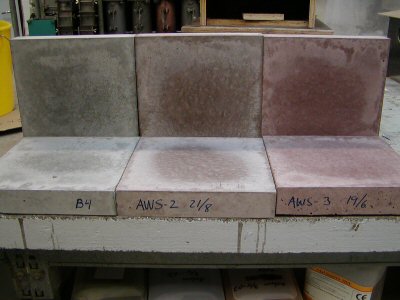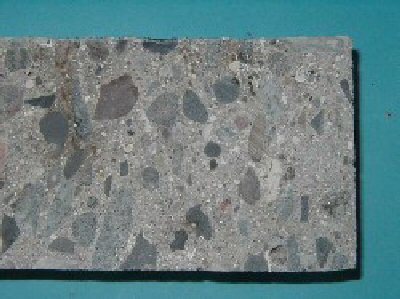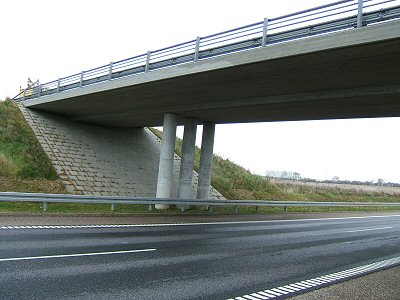Project - BioCrete - Task status
Task 01
The planned ash outlets on the two wastewater plants (Lynetten and Avedoere) has been finalized and they are now in operation. This means, that it is possible to load the ashes into a powder transport lorry, and utilise the ashes in the concrete plant.
Final report for Task 1 is completed. See dissemination.
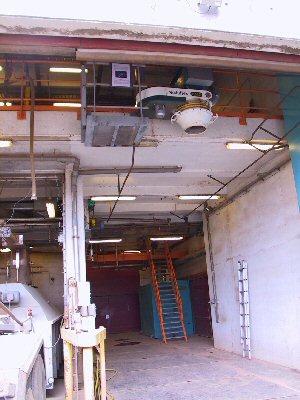
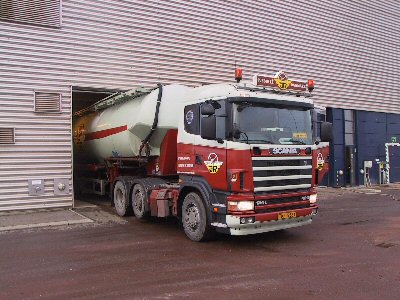
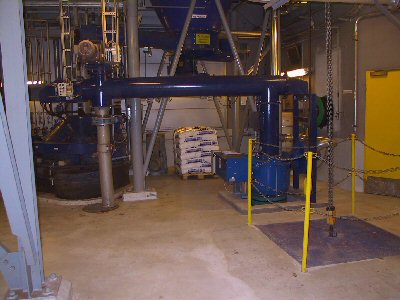
Status per 2007.01.12
Task 02
On the concrete plants facilities for receiving the bioash has been established and the bioash handling facilities are finalized.
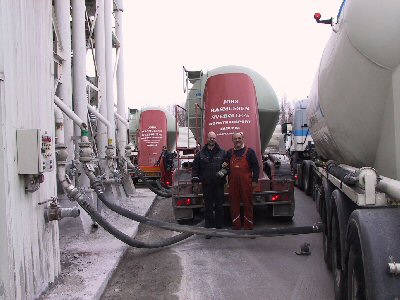
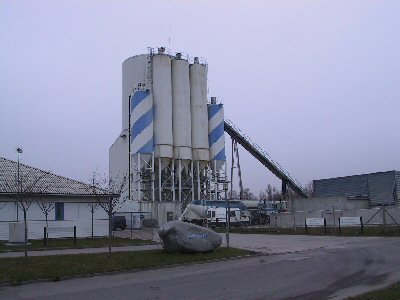
At primo may 2006 all the bioash produced at the wastewater treatment plant at Avedoere was being utilized for concrete. As a result of this the wastewater treatment plant did not deposit any ash from the ash incineration plant. The consumption of bioash is closely linked to the variations in the demand for different concrete types, and is therefore not constant, but varies over the years.
The bioash from Lynetten has a different texture and more investigations are needed in otder to utilize these ashes.
Final report for Task 2 is completed. See dissemination.
Status per 2008.09.25
Task 03
The substitution of iron salts by aluminium salts at the Damhusaaen WWTP started in February 2006 and continued until August. The period of substitution was prolonged because of a higher processtime at the plant, but this is due to other reasons than the substitution. The dewatering of the sludge has taken place at Damhusaaen, and at AWS a separate batch of sludge has been incinerated, thus producing lighter bio ash. This ash has been used in concrete at Unicon, and the concrete has a slight tint of light red. The appearance of the concrete has been assessed both subjectively and objectively.
A memo regarding the Chemical composition of European bio ashes has been written as a part of Task 3.
Final report for Task 3 is completed. See dissemination.
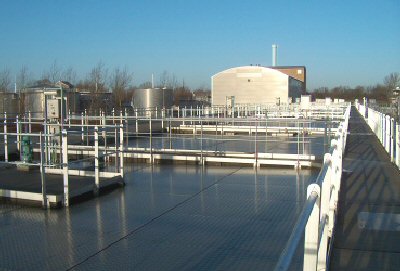
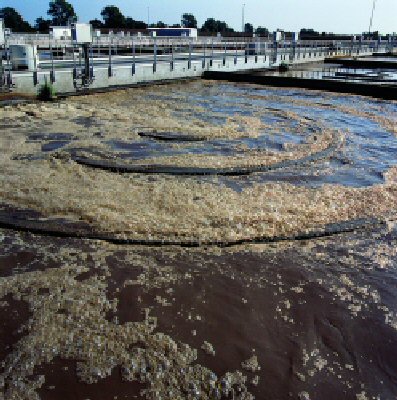
Status per 2008.09.25
Task 04
Sampling of ashes from the two incineration plants started primo May 2006. All samples of bio ash from LYNIS and AWS have been collected and the chemical composition analysed. Approx. 25 chemical and physical parameters were monitored.
The test programme includes the testing described in DS/EN 450-1 no. 5.2 and 5.3, particle size distribution, mineralogy (optic microscopy, SEM, X-ray diffraction), composition (and heavy metal content) by WDXRF.
Some of the analytical data for 4 samples from LYNIS as well as from AWS are shown in Appendix 3 of the progress report. As expected the composition of the bio ash is quite constant.
Final report for task 4 is completed. See dissemination.
Status per 2008.09.25
Task 05
The testing of concrete (from task 6) has finished. The samples were crushed and carbonated and after 28 days the leaching test and analysis of the eluates were performed. The tests showed no significant difference between the leaching from the reference concrete and the concrete with bio ash.
Final report for Task 5 is completed. See dissemination.
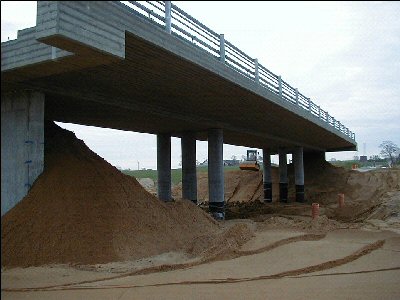
Status per 2008.09.25
Task 06
All the mixing of concrete has taken place. Testing of the concrete includes properties of the fresh concrete, shrinkage, strength development, heat development and resistance to freezing.
The results regarding durability shows no significant difference between the concrete with bioash and the reference concrete. Also there is no significant difference in the strength development in regards to the chemical composition of the bioash used in the concrete.
Final report for Task 6 is completed. See dissemination.
Plane Section
Status per 2008.03.07
Task 07
Two structures have been inspected: The parts of the Green Bridge at Vejle in Jutland (constructed in 2002) made with bio ash and the “fill in” concrete in an underground sewage construction in connection with waste-water detention tanks constructed in 2004.
The results from investigation of the bridge show that the development of strength for the concrete with 9 % bio ash (of the powder content) is comparable with the other concrete types (Reference concrete: concrete with cement, fly ash and mikrosilica and experimental concrete with a high amount of fly ash app. 35-38 %). There are no indications that the concrete has more cracks or other structural damage than the other concrete types.
The two different bioash concrete investigated were still young, less than 5 years of age, and consequently it has not been possible to evaluate their long term durability performance. However, there are no signs that the long-term durability will develop any different than expected for comparable conventional concrete.
Final report for Task 7 is completed. See dissemination.
Part of the Green Bridge. A slight nuance difference can be seen on the beam. This indicates the casting joint.
Status per 2008.09.25
Task 08
Since the beginning of February 2006, Unicon A/S has produced concrete with bio ash at the plants in Stamholmen (Avedøre) and Hedehusene (both in the Copenhagen area). From July 2006, the plant in Ejby also started producing concrete with bio ash.
In the year 2006 we have used app. 569 tonnes of bio ash in Avedøre, 265 tonnes in Hedehusene, and 93 tonnes in Ejby for producing 13.100 m3 of concrete in total.
The bio ash is only used in concrete to be placed in passive environmental class, strength classes 8 and 12 MPa. In addition to this - and outside this project - bio ash is used in a larger scale for mixes not delivered according to DS/EN 206 standard (i.e. concrete with a compressive strength < 8 MPa etc.).
Besides the original task description, this task is also dealing with these two new sub items: (Supplementary activities to task 8):
Material safety data sheet (MSDS) for bio ash. According to the law in Denmark the supplier has to describe the characteristics of his product with respect to safety in a document, which can be handed over to the consumer. AWS has prepared a MSDS in Danish for the bio ash.
An important parameter was the content of “breathable alpha-quartz”, which had to be analyzed for. The content is < 2 %, and it is therefore concluded that the bio ash is not harmful/hazardous for the working environment.
Pre-treatment of LYNIS bio ash.
Because of the particle size distribution of the ash from LYNIS, this ash can not be used in concrete without further treatment. In task 4, 5 and 6 the ash from LYNIS has been “pre-teated” by milling to a satisfactory particle size distribution.
Final report for task 8 is completed. See dissemination.
Status per 2008.09.25
Task 09
Based on results from the technical tasks a guideline on implementation and use of bio ash concrete has been prepared. The target group includes the entire building and construction sector from the manufacturers of bio ash concrete to the owners who have to specify the requirements to bio ash concrete, i.e. implement the environmentally improved technology. At the same time, a layman report has been written for a less technical introduction to the project.
In order to disseminate the ideas in the project to Danish concrete specialist a seminar was arranged in cooperation with The Danish Environmental Protection Agency, who has funded a project on environment and concrete. This project is finalized at the end of 2006 and the seminar was held 5 October 2006 at Danish Technological Institute with participation of approximately 40 representatives of the different stakeholders; Among the participants were representatives from consulting engineers, municipalities, producers of ready-mixed concrete and concrete element producers. The possible reuse of bio ash in concrete production and the BioCrete project was discussed in 3 papers. Material from the presentations can be found at dissemination. Please note that the slides from the seminar is in Danish.
There are plans regarding a possible DEMO project using concrete with bio ash: ASW are renovating a 70.000 m3 storm water basin. In the tender material the possibility of using bio ash will be emphasised.
At the IWA specialist conference “Moving forward. Wastewater bio solids sustainability: technical, Managerial and Public Synergy”, which was held June 2007 in Canada, a presentation "The resuse of bio ash for the production of concrete. A Danish case study” was featured.
Furthermore an abstract; “The use of sludge incinerator ash in the production of concrete” has been accepted on the International Conference on Sustainability in the Cement and Concrete Industry, 16.-19. September 2007, Norway.
An article has been submitted to Life News in February 2007.
An article was printed in a special issue regarding concrete in the Danish daily paper “Licitationen”.
DTI have held 3 courses regarding concrete according to DS/EN 206-1 where bio ash is introduced.
The use of bio ash was mentioned at meetings held by the Danish concrete society in October 2006 and March 2007. The meetings were titled: “The concrete technology of today” and “Use concrete and spare the environment“.
Folders regarding the project were at display at the conferences "ERMCO - Concrete 2007", 4 - 8 June 2007 Seville Spain, "Dansk betondag" September 20th in Copenhagen, Denmark and ”Betonfeber” November 20-21 in Sweden, Stockholm”.
For a complete overview regarding the dissemination activities and the presented material, please see "dissemination".
Final report, including "after life disseminationplan" for Task 9 is completed.
Status per 2008.09.25
Task 10
The project management was an on-going process, and there has been held 9 meetings in the steering committee and two visits from the monitoring team. The project management has prepared a mid-term report, two progress reports and a technical final report. The executive summaries and the whole technical final report can be seen in dissemination or contact AWS for a copy of these reports.
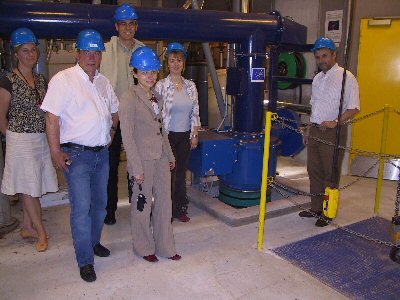

Status per 2008.09.25.
